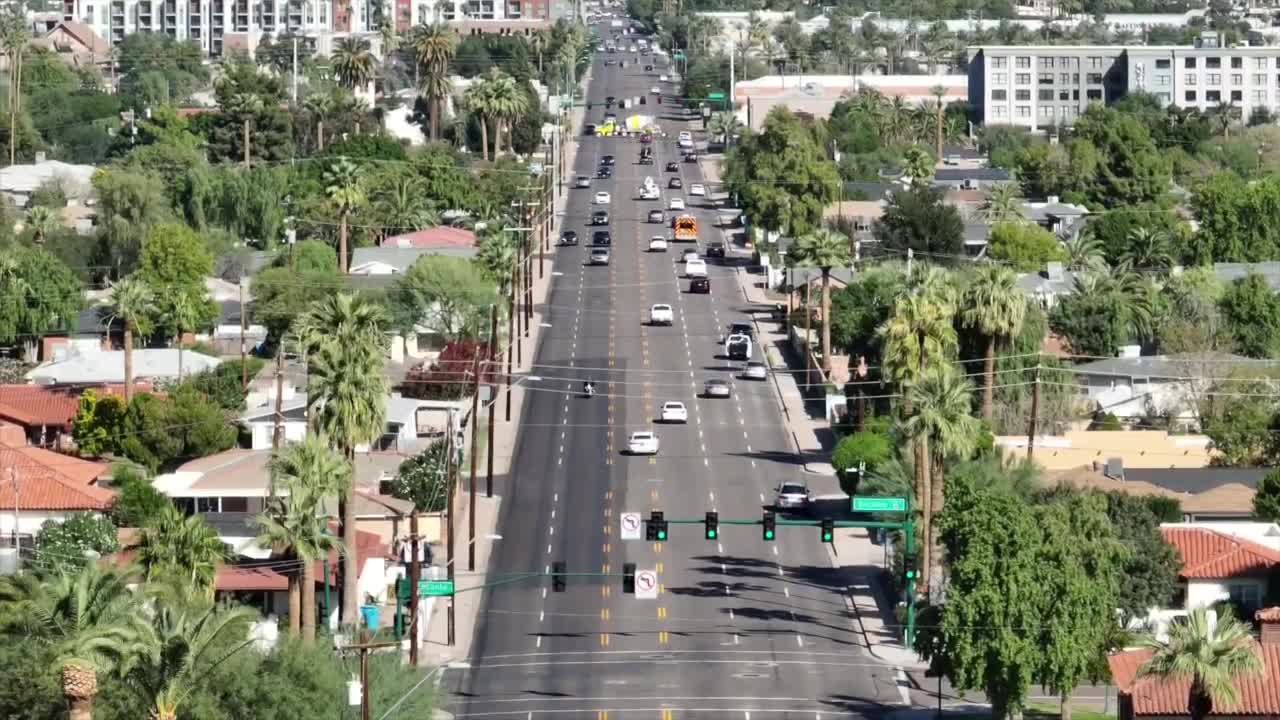PHOENIX — For decades, the “reverse lanes” on 7th Avenue and 7th Street have been one of the more controversial features of Phoenix’s road network.
“I’ve lived in Phoenix since 1960, I’ve lived in this house for 50 years,” said Dwayne Witten, who lives off 7th Avenue.
The noise of the passing traffic can easily be heard from Witten’s house, and sometimes that traffic has come too close to home.
Now, after years of debate, and months after a petition to remove them reached the City Council, the city is set to vote on a new traffic safety study.
“I’ve had to rebuild the fence here twice that I can think of because of accidents that have occurred,” Witten said.
First introduced in 1979 on 7th Avenue, then on 7th Street in 1982, Phoenix’s reverse lanes turn the center lane into a southbound-only lane in the morning, and a northbound-only lane in the evening, a system designed to ease rush-hour traffic.
But for Witten, he says that the system has come with serious safety risks as drivers often don’t know or don’t follow the rules.
“I’d like to see them go away,” Witten said.
An online petition calling for the end of the reverse lanes gathered more than 5,000 signatures this past spring, and it’s not just homeowners who want to see change.
“I’ll be on my computer doing my normal thing, and you can hear the screeching, the crash,” said Shahe Koulloukian, who owns Mazvo Car Care Center on 7th Street.
Koulloukian says the problem isn’t just confusion over lane direction, it’s the speed and danger that come with the setup.
“Forget being reverse, forget not being able to take a left or right turn, it’s that center lane during those times is considered to be a fast lane, and it’s not the biggest problem,” he said.
In response to a community petition, the Phoenix City Council will likely vote in November on how to move forward with a new study of the reverse lanes to assess safety impacts.
If approved, the Street Transportation Department says results from that study could be presented in 2026.
But some, like Koulloukian, believe the solution doesn’t need more analysis, just observation from city leaders.
“In a perfect world, I would love to see them go away,” he said.
In a previous traffic study, the City found that reverse lanes reduced travel times by 40% and said it decreases crash risks at busy intersections due to no left turns being allowed.




